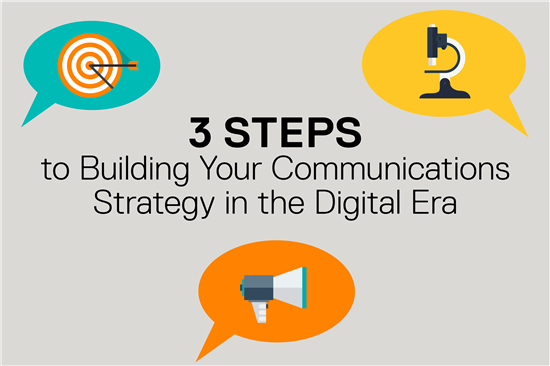Building a viable communication strategy can be daunting. Whether you’re well-established or just getting started, communication frameworks are rapidly shifting. They’re fueled by the ever-expanding world of Internet-connected devices (also known as the Internet of Things). Behind the emerging digital backdrop, a new breed of broadcasters are seeding a cascade of diverse voices.
You may ask, is how can you be heard amid the Internet’s digital chatter? Good question. Let’s unpack this a bit and start at the beginning before the digital landscape shifted so quickly beneath our feet.
Let’s start with your organization, your mission, your people, your customers, and the great story you can tell. Let’s think about all of them, together.
- Figure Out Your Story
Every Company Has a Great Story to Tell
Having cut my teeth in the for-profit world, I marvel at the ease to which companies, every single one of them, have a great story to tell. If your organization isn’t mission-driven, crafting a story is challenging and can result in an external narrative that perhaps falls flat. Relying on catchy slogans and millions of dollars for ad agencies, a story can be carved out. Well, kind of.
Chances are very good that you do not have millions to waste. But you do have expertise. Your story embodies your expertise.
2. Remember Your Original Roots
Start by earnestly remembering those original roots. What made your company take flight? Ultimately there’s a sincere desire to be of service. With deep, venerable recognition, give yourself, your staff, your stakeholders, and your customers a big, hearty thank you! Don’t forget to mention how much they have meant to you over the years.
Next, figure out what, how, why, and with whom you communicate your story. But don’t worry: the heavy lifting happened when you recognized the vision and passion behind your mission and embarked on a path to communicate it.
Knowing your roots makes it easy to craft a communication strategy. Your communication strategy is an authentic hand and glove that fits with your customers.
3. Do a Communications Audit
Take a deep dive into your current communications environment. What’s in place already? For instance, do you have brand guidelines? Even if they’re rudimentary, it’s a start. If not, you’ll have to take the time to figure out what your brand represents. Begin by understanding the essence of your mission and weaving it into your brand.
Here is a communications strategy starter list:
- Survey — Ask questions of your customers. Get a feel for who they are and what they need from you. How can you help and serve them best?
- Brand message — What does your brand represent?
- Key messaging — Who are the personas (user types in your audience) and what do you want to say to them?
Develop Your Marketing Narratives
Marketing narratives are messages that connect with your audience in an emotional way. A marketing narrative is one of the key tools for developing a digital communications strategy. I recommend developing an internal narrative for employees and stakeholders inside your organization, and also an external narrative for your audience out there in the world. I craft both types of narratives. The internal narrative helps inform the eternal narrative.
Internal Narrative
Explore your internal narrative. Interview your stakeholders, department heads, and staff to understand how they feel about your mission and brand. As you do this, measure their sentiment.
How much do they care about your business? How well have you weaved its tenets into your mission’s actualization? In other words, are your people behind the mission and do they feel empowered to carry the message? Do they feel accomplishment with regard to your brand promise? Understanding the current sentiment is a key to developing a communication strategy.
Recognize that you have internal archetypes or personas that carry the meaning of your mission, nuanced from their perspective. For instance, you may have the boss, the craftsperson, the accidental techie, and the mission-driven persona, each with their own narrative.
You need to find the common thread that unites them. You may need to improve internal culture to help grow your brand footprint.
The goal is to align your internal narrative with your external one. To align them provides a powerful foundation that propels your story and defines your strategy.
External Narrative
There are two ways to craft this message:
- By the numbers — How many people have you served? How many countries are you in? Provide the numbers to demonstrate your impact.
- By your story — Start by telling the story that conveys the capability behind your mission. Next, collect success stories from those you have served and find ways on your website or through word of mouth to demonstrate your organization’s impact. Social proof is a great way to spur engagement from brand advocates and customers. Show, don’t tell.
Once your communication strategy is solidified, a metrics plan will guide interactions with your audience. At the very least have Google Analytics set up to provide website data. Set a baseline for all your metrics, including social media, to establish a solid base to work from.
If you can manage to do even a fraction of this list, you’re moving in the right direction. Stay tuned for part 2 in this series!
This blog was originally published by Janice Burney on TechSoup.









